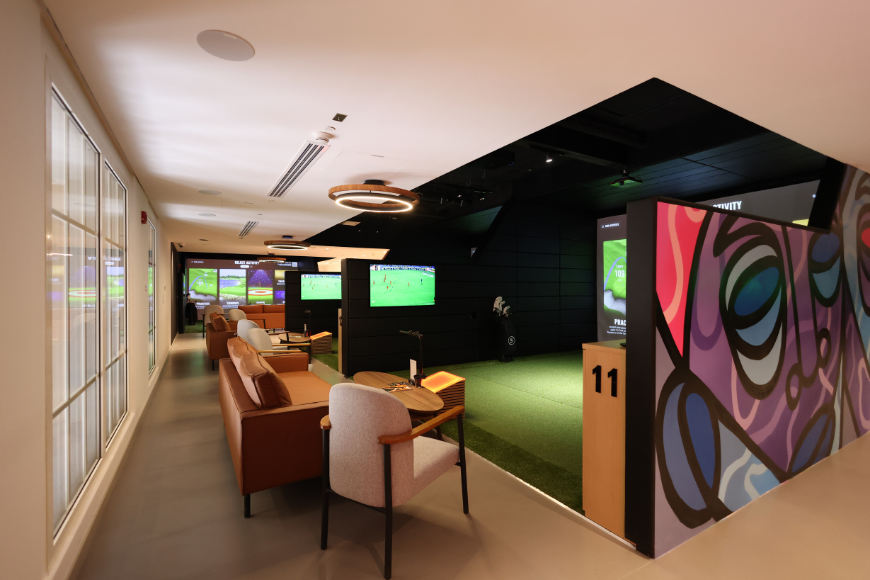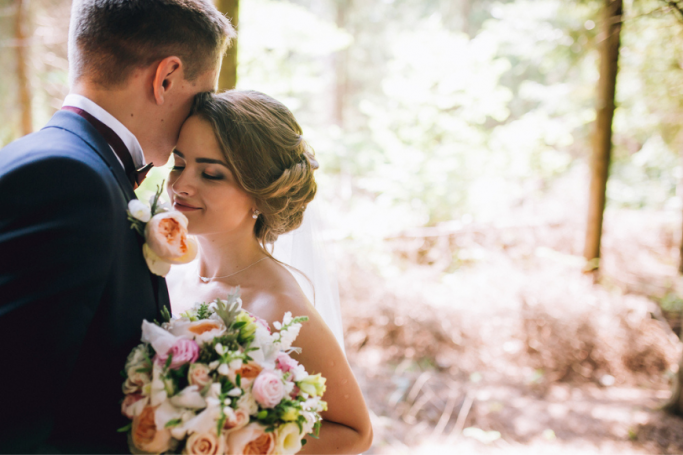Popular Productions is back this year by popular demand with their hugely successful production of The Woman in Black. Ahead of their promising encore, our Group Editor at ExpatWoman caught up with the director and producer John Payton as well as Malcolm James (who plays Arthur Kipps) and Mark Hawkins (The Actor) and asked them a few questions. Read along to find out what they had to say!
As we’re aware, The Woman in Black is a terrifying, horror story. Is the atmosphere just as tense during rehearsals?
John Payton: As Director, I try to make it as relaxed as possible. But when we’re running through scenes, the actors have to concentrate very hard as the sound effect and music cues and general stage business in the play demand real focus. It can be tense, especially around the moments of ‘terror’ in the play. It’s important to get it perfect for the audience.
Malcolm James: Rehearsal rooms don’t have quite the same atmosphere as a theatre but once we’re rehearsing on set in Dubai the fears will kick in. And thankfully it is Mark who has to do all the creeping around in the dark.
Mark Hawkins: The play can be very technical and there's lots to remember when it comes to props and choreography etc., However, so much of this play is about atmosphere and the imagination, it's important to retain an air of the unknown. Sharing the odd ghost story always helps!
Have you watched previous adaptations of TWIB? Any learning experiences that you’d like to share?
JP: I grew up watching the play in London’s West End. Just like my colleague says, I too had a near experience with ‘the Woman in Black’. She looked right at me at one point, and I can tell you – I did not like her expression one bit.
MJ: I have performed in the UK production (both in the West End and on tour) and have seen the film and TV versions. The choice of medium makes different demands but it is remarkable (and a strong testament to author Susan Hill’s imaginative powers) how strongly the story emerges each time – a wonderful chiller/thriller with a deep mystery at its centre.
MH: I once watched a production completely by myself from the upper circle, the women in black looked right at me, needless to say, I was terrified! Bring a friend.
How do you manage to create an atmosphere of terror in a live-action play without the use of computer graphics?
JP: Through careful lighting and stage effects we create the atmosphere necessary for us to help an audience suspend disbelief. It’s about getting the audience on edge, nervous, afraid of the dark. When you do this in the right way, people are more susceptible to shocks and scares. Detailed sound effects are also incredibly important for the ambience. There’s a soundscape of over 100 sound and music cues, which underscore and punctuate the key moments of the play. I guess it’s a delicate balance of many theatrical elements and the strengths of our great cast of actors which combine to serve the story the way it should be.
MJ: The play celebrates the art of theatre as much as it tells a ghost story, and does so by using lighting, sound, some simple but very effective stagecraft and allying everything to the most powerful weapon in the room -the audience’s imagination.
MH: With imagination! Ours and our audiences!” The set, lighting. costumes and music obviously help a great deal to create the right atmosphere on stage, but nothing is as powerful as the images the audience conjure up from their own imaginations.
What sort of preparations go into putting up a play like The Woman in Black?
JP: The casting, preparation of the scenery and effects. Careful rehearsal of the show over three weeks of intensive study in London. It takes a lot of time and effort to get a production like this right on the night.
What’s a typical day like in the life of an actor/director/technician during rehearsals?
JP: Up early for travel to London (I live in the countryside!). Meet the cast and talk through our day ahead. Rehearsal of scenes, a tweak of a moment or two. Lunch, followed by another afternoon of rehearsal and perhaps a run through to see how we’re progressing. Then some notes to the cast before we finish. My evening will then be taken up by catching up on emails to the production team and theatre and as I’m responsible for the sound on the show too, editing time for the sound effects. Then to bed. Repeat the next day.
MJ: Usually the director will give an indication the day before as to what scenes are being rehearsed that day, so it’s my job as an actor to turn up ready to work on those scenes, with lines learned and ideas about what to do with them. Staying focused, open to suggestions and direction, and sensitive to what is being offered from the other actor (which may completely change your own attitude to a line) are all important parts of groping your way towards the interpretation you feel ready to put before an audience.
MH: Lots of discussions, learning the blocking of scenes, trying out different ideas and interpretations.
What’s your favourite type of audience reaction?
JP: Big screams. Then laughter because they didn’t know they’d react in that way. That means we’re doing our job right. It’s also nice to hear applause at the end because the cast deserve it.
MJ: I know when the “scream” moments come and as the narrator, I am usually looking out front when they happen; watching someone jump out of their seat never fails to satisfy.
MH: Stunned silence.
Do you have any audience pet peeves? (Like mobile phones, children etc…)
JP: Videoing of performances. It’s so distracting and disrespectful to not only the cast, creative team, and playwright but also the audience around the offender!
MJ: Like most actors, I HATE mobile phones, particularly when audience members think it is fine to start tweeting during the show – your phone may be on silent but I can see your face brightly lit in the middle of a dark auditorium…
MH: Mobile phones!
I’m sure you all watch a lot of plays, but which one has been particularly memorable? Could be a play, or a scene or an actor/role.
JP: I saw the West End production of the Broadway musical GYPSY a few years ago with Imelda Staunton in the lead role. She was on a different level. Such a powerful, detailed and emotional performance. That has stayed with me a long time.
MJ: Watching actors tackle the title role in Hamlet always intrigues me; there is so much variety in such a multifaceted role it allows for so many different interpretations: I still have very fond memories of a young and pyjama-clad Mark Rylance in the role. My favourite production of recent years – The Seagull with Kristin Scott Thomas, Chiwetel Ejiofor, and Carey Mulligan. My favourite performance of recent years – Denise Gough, savagely authentic in People, Places and Things
MH: I saw a German play last year called Ophelias Zimmer directed by Katie Mitchell that focused on Ophelia’s story from Hamlet. It was incredibly moving and brilliantly performed!
We’ve known people who’ve watched TWIB more than once. Why do you think people come back for it? What makes it stand out from the others?
JP: It’s the adrenaline rush. If you’ve seen the show before, you’ll know what I mean. It’s also got a great story and is just as much of an ‘experience’ as it is a play. I think too, it’s the sheer originality of the play that is its best asset. There really is nothing else like it out there.
MJ: I think people love being scared in a safe environment, and it is such a good story and such a clever piece of theatre that – like the best roller-coaster ride – you just want to do it all over again!
MH: It's not often that people get genuinely scared by live theatre, so when it happens it's memorable, people like to be frightened. It's exhilarating a bit like going to a theme park, this play is a bit like a ghost train, as soon as you get off you want to go again!
Are you excited or nervous about your performance in Dubai? How do you think the audience here will react to TWIB?
JP: I’m always excited to open the show again in Dubai. I think the audience will love it.
MJ: I’m very excited to visit Dubai for the first time and to find out how the audience will respond. Audiences vary wherever you go – some very vocal, some silently gripping their seats (or their neighbour!) in fear, so it will be fascinating to see how much variety we get during our stay
MH: I'm really excited! I always get nervous but that's important. Fingers crossed they will love it!
And lastly, do you believe in ghosts?
JP: Absolutely. And no kidding, I’ve met one too.
MJ: I’m a bit of an agnostic on this one. I’ve never seen one but I know people who swear they HAVE, so I’m open-minded. I think if something very traumatic (like a murder) happens in a room then some kind of energy may linger in that place which sensitive people can pick up – images, sounds – but I suppose that is very different from ghostly haunting. On tour in the UK we often played very old theatres which are reputedly haunted (usually by a woman in GREY) so I did think if there was ever a play where the theatre ghost was likely to show her face it would be during this one; sadly, it never happened!
MH: I do now!
About The Woman in Black
This show is suitable for audiences aged 10 upwards and runs from the
26th of September to the 2nd of October, 2017. To book your tickets online, visit
www.seewomaninblack.com or visit
www.madinattheatre.com - or you can also grab yours in person at the theatre box office at Souk Madinat Jumeirah, Dubai.







.png?itok=HBSyMDok)









































































.png)


























.png?itok=0fOAXkOm)

























.png?itok=EH_x0Pha)
